Hubble telescope witnesses asteroid's mysterious disintegration
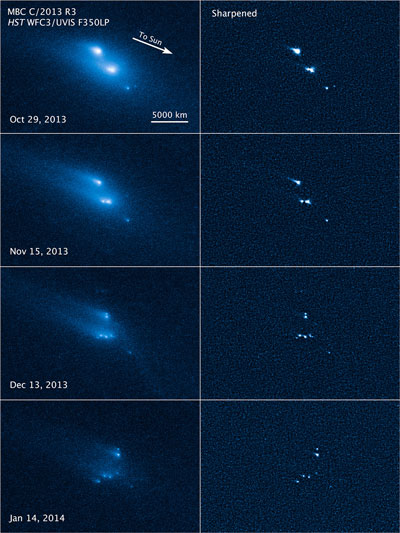 The Hubble Space Telescope has recorded the never-before-seen break-up of an asteroid into as many as 10 smaller pieces.
The Hubble Space Telescope has recorded the never-before-seen break-up of an asteroid into as many as 10 smaller pieces.
Mar 6th, 2014
Read more
 Subscribe to our Space Exploration News feed
Subscribe to our Space Exploration News feed
 The Hubble Space Telescope has recorded the never-before-seen break-up of an asteroid into as many as 10 smaller pieces.
The Hubble Space Telescope has recorded the never-before-seen break-up of an asteroid into as many as 10 smaller pieces.
Mar 6th, 2014
Read moreGOSSS (Galactic O-Star Spectroscopic Survey) substantially improves on prior catalogues. It is a very ambitious project from the point of view of the number of objects and the quality of the data; it will yield a homogeneous sample, with data from both hemispheres which will be constantly updated, so it will be a very solid tool.
Mar 6th, 2014
Read more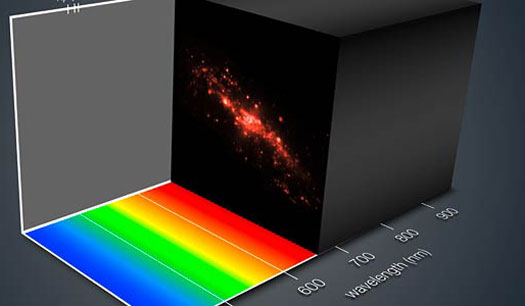 A new innovative instrument called MUSE (Multi Unit Spectroscopic Explorer) has been successfully installed on ESO's Very Large Telescope (VLT) at the Paranal Observatory in northern Chile. MUSE has observed distant galaxies, bright stars and other test targets during the first period of very successful observations.
A new innovative instrument called MUSE (Multi Unit Spectroscopic Explorer) has been successfully installed on ESO's Very Large Telescope (VLT) at the Paranal Observatory in northern Chile. MUSE has observed distant galaxies, bright stars and other test targets during the first period of very successful observations.
Mar 5th, 2014
Read more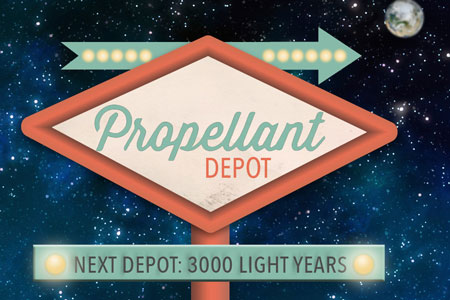 MIT team proposes storing extra rocket fuel in space for future missions.
MIT team proposes storing extra rocket fuel in space for future missions.
Mar 5th, 2014
Read moreAstronomers have developed a new method of gauging the atmospheric pressure of exoplanets, or worlds beyond the solar system, by looking for a certain type of molecule.
Mar 4th, 2014
Read more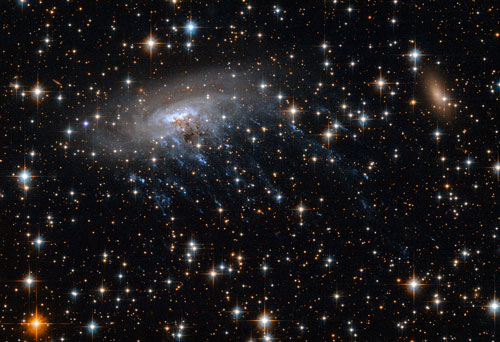 This new Hubble image shows spiral galaxy ESO 137-001, framed against a bright background as it moves through the heart of galaxy cluster Abell 3627. This cluster is violently ripping the spiral's entrails out into space, leaving bright blue streaks as telltale clues to this cosmic crime.
This new Hubble image shows spiral galaxy ESO 137-001, framed against a bright background as it moves through the heart of galaxy cluster Abell 3627. This cluster is violently ripping the spiral's entrails out into space, leaving bright blue streaks as telltale clues to this cosmic crime.
Mar 4th, 2014
Read moreThree new planets classified as habitable-zone super-Earths are amongst eight new planets discovered orbiting nearby red dwarf stars by an international team of astronomers from the UK and Chile.
Mar 4th, 2014
Read more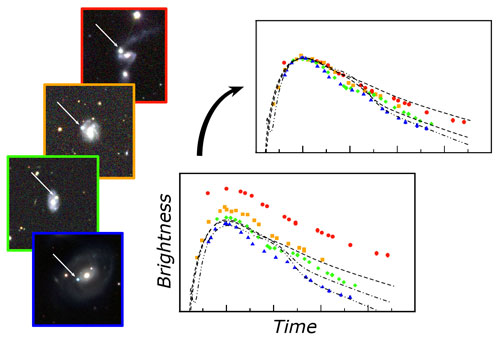 The Nearby Supernova Factory based at Berkeley Lab shows that Type Ia supernovae have a surprisingly large range of masses.
The Nearby Supernova Factory based at Berkeley Lab shows that Type Ia supernovae have a surprisingly large range of masses.
Mar 3rd, 2014
Read more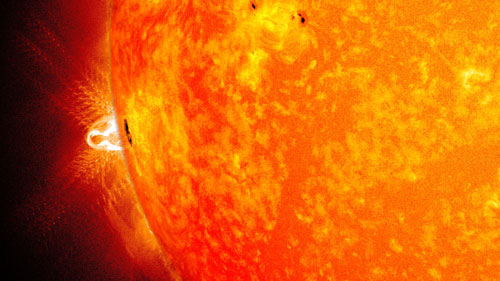 A giant sunspot - a magnetically strong and complex region on the sun's surface - has just appeared over the sun's horizon. This is the third trip for this region across the face of the sun, which takes approximately 27 days to make a complete rotation.
A giant sunspot - a magnetically strong and complex region on the sun's surface - has just appeared over the sun's horizon. This is the third trip for this region across the face of the sun, which takes approximately 27 days to make a complete rotation.
Feb 28th, 2014
Read more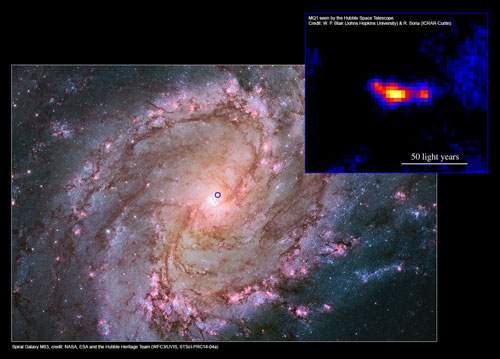 A team of Australian and American astronomers have been studying nearby galaxy M83 and have found a new superpowered small black hole, named MQ1, the first object of its kind to be studied in this much detail.
A team of Australian and American astronomers have been studying nearby galaxy M83 and have found a new superpowered small black hole, named MQ1, the first object of its kind to be studied in this much detail.
Feb 28th, 2014
Read more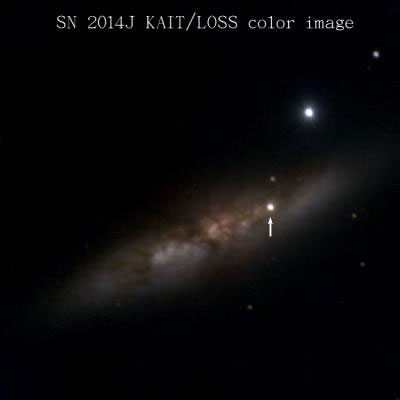 The closest and brightest supernova in decades, SN 2014J, brightens faster than expected for Type Ia supernovae, the exploding stars used to measure cosmic distances, according to University of California Berkeley astronomers.
The closest and brightest supernova in decades, SN 2014J, brightens faster than expected for Type Ia supernovae, the exploding stars used to measure cosmic distances, according to University of California Berkeley astronomers.
Feb 27th, 2014
Read more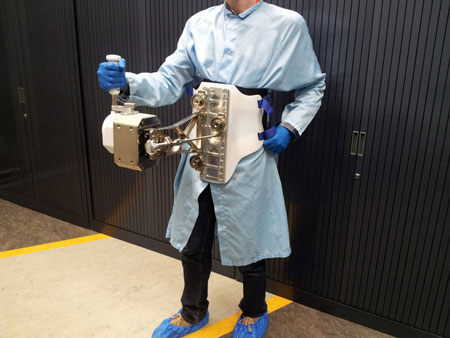 Stowed inside ESA's next supply ship to the International Space Station will be one of the most advanced joysticks ever built, designed to test the remote control of robots on the ground from up in orbit.
Stowed inside ESA's next supply ship to the International Space Station will be one of the most advanced joysticks ever built, designed to test the remote control of robots on the ground from up in orbit.
Feb 26th, 2014
Read more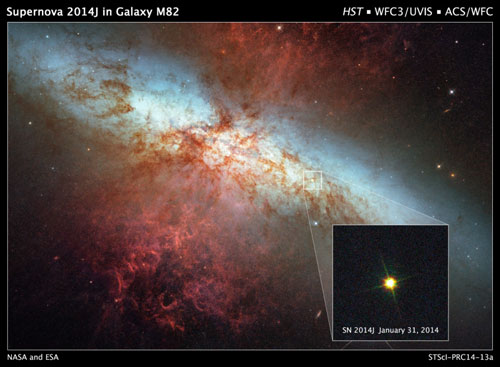 This is a Hubble Space Telescope composite image of a supernova explosion designated SN 2014J in the galaxy M82.
This is a Hubble Space Telescope composite image of a supernova explosion designated SN 2014J in the galaxy M82.
Feb 26th, 2014
Read more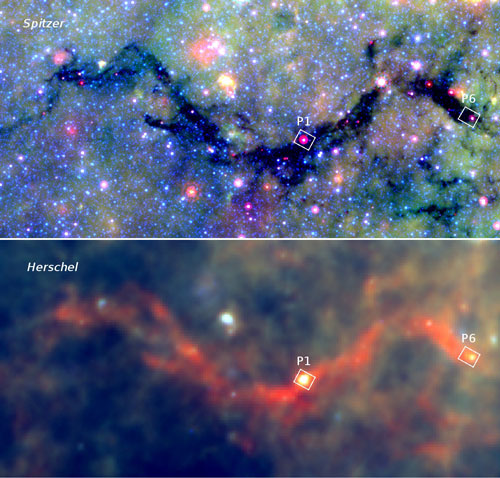 New images from the Smithsonian's Submillimeter Array (SMA) telescope provide the most detailed view yet of stellar nurseries within the Snake nebula. These images offer new insights into how cosmic seeds can grow into massive stars.
New images from the Smithsonian's Submillimeter Array (SMA) telescope provide the most detailed view yet of stellar nurseries within the Snake nebula. These images offer new insights into how cosmic seeds can grow into massive stars.
Feb 26th, 2014
Read more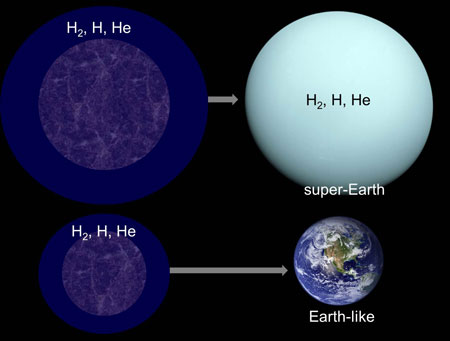 A team of scientists have looked at how these worlds form and suggest that many of them may be a lot less clement than was though. They find that planets that form from less massive cores can become benign habitats for life, whereas the larger objects instead end up as 'mini-Neptunes' with thick atmospheres and probably stay sterile.
A team of scientists have looked at how these worlds form and suggest that many of them may be a lot less clement than was though. They find that planets that form from less massive cores can become benign habitats for life, whereas the larger objects instead end up as 'mini-Neptunes' with thick atmospheres and probably stay sterile.
Feb 26th, 2014
Read moreA physicist at Heidelberg University has developed a theoretical model that complements the nearly 100-year-old conventional model of cosmic expansion. According tohis theory, the Big Bang did not occur 13.8 billion years ago - instead, the birth of the universe stretches into the infinite past.
Feb 25th, 2014
Read more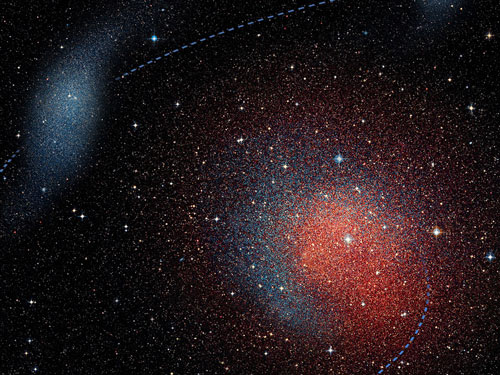 Studying Andromeda II, astronomers observe where little galaxies come from.
Studying Andromeda II, astronomers observe where little galaxies come from.
Feb 25th, 2014
Read more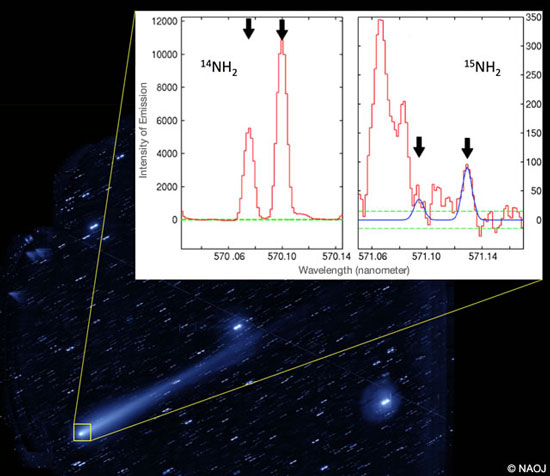 This is the first time that astronomers have reported a clear detection of a relatively rare nitrogen isotope in a single comet and also measured the relative abundance of two different forms of nitrogen of cometary ammonia.
This is the first time that astronomers have reported a clear detection of a relatively rare nitrogen isotope in a single comet and also measured the relative abundance of two different forms of nitrogen of cometary ammonia.
Feb 25th, 2014
Read more